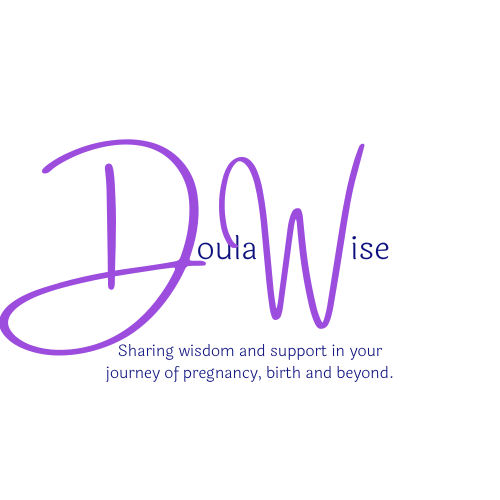
For a few weeks now we’ve been covering the topic of household items made into labor tools. This week’s edition is all about the twin size bedsheet. What does a sheet have to do with pain management? It’s not to mop up the watery mess from your amniotic sac breaking. Let’s get into it!
Scenario 1: you’ve been carrying 8 lbs. of baby, give or take, plus 8 lbs. of water, 8 lbs. of placenta, 30% uptick in blood supply, and now you’re swelling as well! Due to the hormone relaxin, which creates flexibility in your ligaments and joints and allows your organs to move upward, your chest to expand, and your baby to move through your pelvis easier, you’re also dealing with hip pain, back pain, or maybe SPD (symphysis pubis disfunction, or pain in your pelvic bone). How can you find relief without taking medication? A twin flat sheet! You wrap that sheet under your belly, around your hips, doing a double-twist where the pain is (over your SI joint, your mid-pelvis, or even your pubic bone, for instance) and wrap it back around to the point where you started and tie it. The double twist will hold the tightness of the cloth as well as put added pressure to your pain spot, as well as do the oh-so-wonderful hip squeeze!
Scenario 2: your belly is heavy. It’s been a long pregnancy, and your stomach muscles are begging for relief. How can you help your belly feel less weighted down without the side effects of wearing a pregnancy belly band? A twin flat sheet! You wrap the sheet around your hips and under your belly, crossing it in front of you, then lifting the sheet upward, you can either tie it behind your neck to free your hands (this is a very temporary position as it’ll pull on your neck and create tension and muscle cramps if you stay this way for long), or you can bring it behind your arms and over your shoulders, lifting your belly by pulling down on the ends of the sheet. (This is much easier to pull downward, working with gravity, rather than lifting upward and away from gravity.) Do this for a few minutes at a time and then, when you need your hands again and your belly is ready to be slowly released, you can then tie the sheet around your waist until you are ready to do it again.
Scenario 3: as you contract, you’re noticing a lot of pain on your pelvic bone and the care provider is telling you your baby isn’t descending. How do you fix this suboptimal position? A twin flat sheet! In a variation of the cat/cow, where you’ll be on elbows and knees, your partner or doula will stand behind you. You can put the sheet under your belly while they pull the sheet backward, toward them and you lean forward during a contraction. (This can be done with or without a tennis ball where baby’s head is, to help motivate them over that bone and deeper into the pelvis.) After a few contractions baby should be in a more optimal position, but if not, you can lean back on your support person while they hold the sheet that is wrapped around your hips, twisted under your belly and is now over your shoulders. During a contraction you’ll lean into them or even slightly bend into a high squatting position with your knees apart and your feet close together while they pull up on that sheet, bearing some of your weight, and pressing on baby’s head to coax them into the pelvis.
Scenario 4: your back aches and your hips are hurting during the contractions, but your doula and your partner are feeling worn from doing hours of counterpressure. How can you still get good hip squeezes without wearing them out? You guessed it! A twin-size flat sheet! Wrapping that sheet under your belly, around your hips, and either doing a double twist to tie in the front or crossing once over your back for your doula to grab one side and your partner to grab the other, they pull toward themselves during your contractions to create a deeper hip squeeze.
What are your thoughts on this solution? Will you be willing to try a sheet or long cloth (or a Mexican rebozo) during your labor as a means of pain management?
